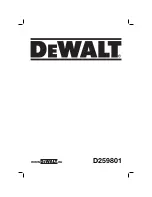
21
lf
the truck is to be cleaned with a water jet or a high-pressure cleaner, all electrical and
electronic components must be carefully covered beforehand as moisture can cause
malfunctions.
Do not clean with pressurised water.
After cleaning the truck, carry out the activities detailed in the "Recommissioning
(on page 25)" section.
Electrical System
Only suitably trained personnel may operate on the truck's electrical system.
Before werking on the electrical system, take all precautionary measures to avoid -
electric shocks.
For battery-operated trucks, also de-energise the truck by removing the key.
Settings
When repairing or replacing hydraulic, electric or electronic components or
assemblies, always note the truck-specific settings.
Tyres
The quality of tyres affects the stability and performance of the truck. When replacing
factory fitted tyres only used original manufacturer's spare parts, as otherwise the data
plate specifications will not be kept.
When changing wheels and tyres, erisure that the truck does not slew (e.g. when
replacing wheels always left and right simultaneously).
5.3
Servicing and inspection
Thorough and expert servicing is one of the most important requirements for the safe
operation of the industrial truck. Failure to perform regular servicing can lead to truck
failure and poses a potential hazard to personnel and equipment.
The service intervals stated are based on single shift operation under normal operating
conditions. They must be reduced accordingly if the truck is to be used in conditions of
extreme dust
,
temperature fluctuations or multiple shifts.
The following maintenance checklist states the tasks and intervals after which they
should be carried out. Maintenance intervals are defined as:
W
=
Every 50 service hours, at least weekly
A
=
Every 500 operating hours
B
=
Every 1000 operating hours, or at least annually
C
=
Every 2000 operating hours, or at least annually
W service intervals are to be performed by the customer.
In the run-in period - after approx. 100 service hours - or after repair work, the owner
must check the wheel nuts/bolts and re-tighten if necessary.


































